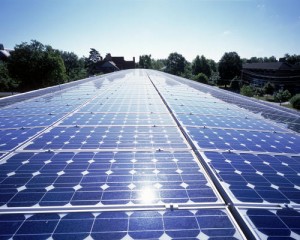 Welcome to the sixth post in the Sustainable Energy without the Hot Air – A New Zealand Perspective series. Today we’re crunching the numbers on solar potential in New Zealand. For the background to the work please our introductory post here. Also check out our earlier posts on the potential of hydro power, geothermal and wind, and yesterday’s summary. Note: the units are in kWh/day/person – ie. if you ran a 40W lightbulb for 24 hours, it’d take ~1 kWh over the space of a day. We then divide it by person to give you a sense of the scale of the resource proportionate to the size of the population. Be sure to check out the methodology. For reference – we’re looking to replace around 55 kWh/d/p of energy currently generated by fossil fuels.
Welcome to the sixth post in the Sustainable Energy without the Hot Air – A New Zealand Perspective series. Today we’re crunching the numbers on solar potential in New Zealand. For the background to the work please our introductory post here. Also check out our earlier posts on the potential of hydro power, geothermal and wind, and yesterday’s summary. Note: the units are in kWh/day/person – ie. if you ran a 40W lightbulb for 24 hours, it’d take ~1 kWh over the space of a day. We then divide it by person to give you a sense of the scale of the resource proportionate to the size of the population. Be sure to check out the methodology. For reference – we’re looking to replace around 55 kWh/d/p of energy currently generated by fossil fuels.
So, solar! We’ve got a lot of it, or do we? Our lower latitude means that New Zealand’s solar potential is certainly rather better than that of the UK and the current world leaders Germany. A roof inclined at the optimal angle in NZ gets on average 181W/m2 in Northland, 178 in Auckland, 195 in central Otago, 185 in Canterbury. (This is based on averaging all available NIWA hourly radiation data at suitable measurement sites). This is impressive compared to the UK average of 110W/m2 and 130W/m2 in Germany.
There are 4 ways to harness solar energy:
Continue reading “Sustainable Energy NZ #6 – our place in the sun – doing the math on solar power”

 A new
A new  The
The